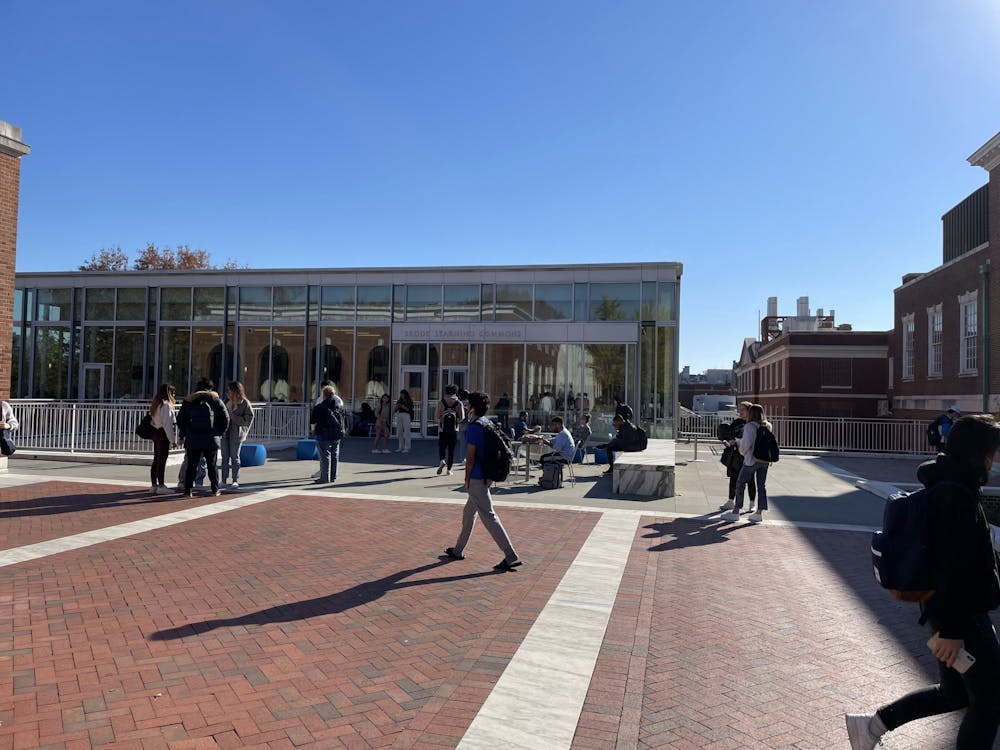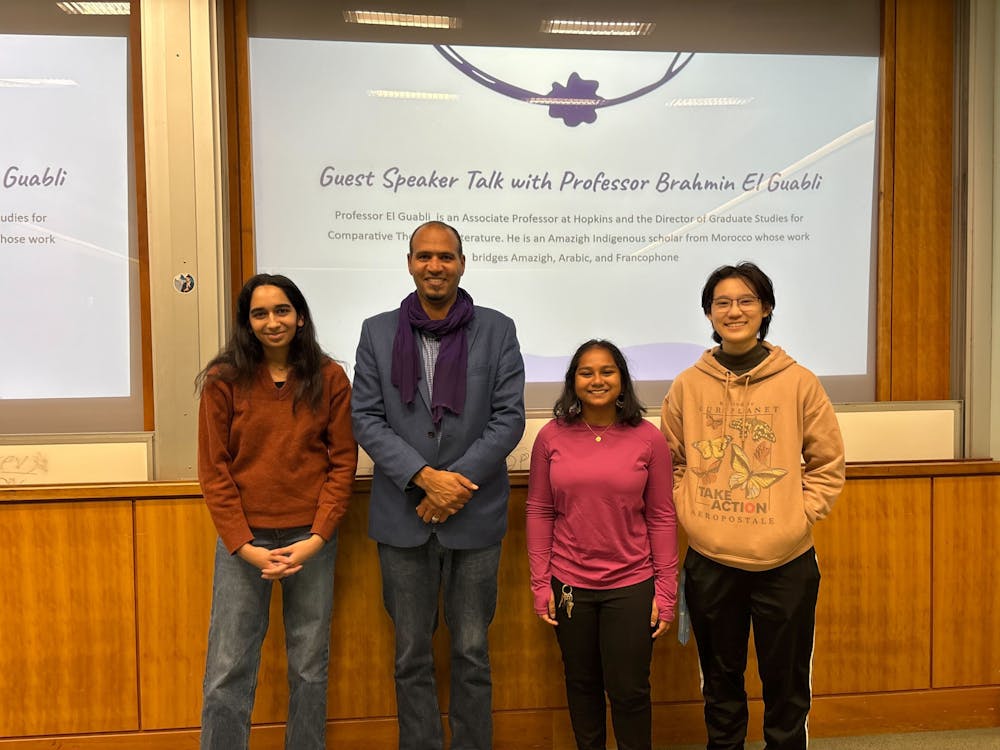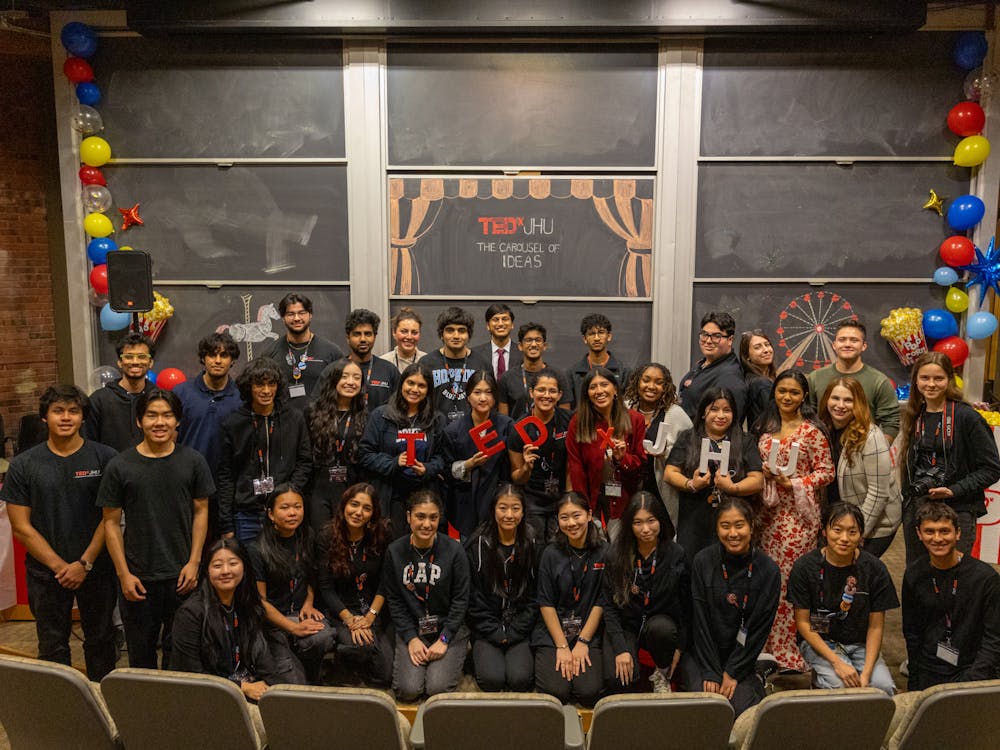The University welcomed the majority of students back on campus during Move-In Weekend from Jan. 21 – 23. Due to a nationwide surge in COVID-19 cases largely caused by the spread of the Omicron variant, the University moved Intersession online, with some exceptions granted for those engaged in research and select in-person programs.
Students who arrived last weekend were required to take a rapid test and a standard saliva PCR test upon arrival and were only allowed into dorms if they received a negative result on their rapid test. Those who arrived outside of testing hours were required to quarantine in their rooms until they were able to get tested.
The change in move-in guidelines forced some students to change travel plans. Freshman Tinu Owolabi shared her experience with this in an email to The News-Letter.
“I had to push my ticket back significantly, which meant we lost some money,” she wrote. “Ultimately, I was able to get my ticket switched to the day right before classes started, which put me at a disadvantage in terms of being fully prepared for this semester.”
For others, like freshman and international student Gloria Li, who returned on Jan. 6 from Canada, the move-in process was free of major difficulties despite scheduling changes.
Li explained in an email to The News-Letter that she enrolled in a Hopkins Emergency Response Organization (HERO) emergency medical technician training course, which allowed her to move in before Move-In Weekend, and besides having to wait for the University’s policy announcements, she reported no inconveniences during the move-in process.
However, she still acknowledged the additional obstacles regarding transportation accommodations for international students.
“For international students and other students who live far away like Hawaii, coordinating travel plans can be really tough, especially when there is a change on a short notice,” she wrote. “Flights are hard to rebook, and prices tend to go up the closer the departure date is.”
Brian Shields, director of communications for development and alumni relations and a volunteer during move-in on Jan. 21, wrote in an email to The News-Letter that students seemed to be in high spirits despite the changes.
“Everyone seemed pretty excited to be back on campus and seemed to take the testing protocol in stride. I imagine at this point that testing is part of the routine,” he wrote. “I have to say I was impressed with how gracious the students were, as some had traveled a fair distance to return to Baltimore.”
Heather Mason, director of human resources for campus security and University administration and another Move-In Weekend volunteer, shared in an interview with The News-Letter that she had been concerned that students would arrive at residence halls without getting tested.
Though Mason recalled this happening a few times, those students were quickly tested and cleared to return, and she felt that there were no major conflicts throughout the process.
Some students expressed concerns over returning to campus due to COVID-19 numbers. Sophomore Jeremy Gu, a resident advisor (RA) at AMR I, discussed his preparation for a safe arrival to campus in an email to The News-Letter.
“My family and I discussed being extremely careful about COVID given the rise in omicron cases,” he wrote. “So prior to moving in, I had a week of really making sure I didn't put myself in any risky situations which mitigated the chance for my move in interference.”
Freshman Rudy Zhang, who tested positive for COVID-19 on arrival, wrote in an email to The News-Letter that he thought Hopkins handled the quarantining procedures in an appropriate manner.
“I was assigned with an adult who checked in with me every day about my personal wellbeing and the JHU COVID-19 call center checked with me every two days about my symptoms,” he wrote. “Overall, the directions from staff have been very clear and the assistance they have provided is professional and organized.”
Peer institutions have reported noticeable upticks in COVID-19 positivity rates during move-in. The Harvard Crimson reported high positivity rates among returning Harvard employees during the first week of the calendar year, and quarantine housing hit capacity last week at Princeton University.
As of Jan. 30, The University’s Isolation Housing was 21.13% occupied according to its COVID-19 testing dashboard. In the week between Jan. 22 and Jan. 29, 165 students tested positive for COVID-19.
Freshman Tory Hu moved in during Intersession and initially tested negative on Jan. 9. She had to quarantine at the Colonnade Inn after coming into contact with a COVID-19-positive friend and subsequently testing positive.
Hu suggested that the University should improve its contact tracing process in an email with The News-Letter.
“Contact tracing should be done a lot sooner,” she wrote. “I received the contact tracing call from Hopkins after I got released back to my dorm.”
Zhang recommended administering tests to quarantined students before releasing them back to campus. He explained that he was released from quarantine after five days but was not tested before returning to his dorm because he was asymptomatic.
Nevertheless, Gu felt the University’s policies ensured a safe arrival to campus and encouraged students to seek help from their RAs as the semester progresses.
“There are so many resources, RAs as well, that can assist in any COVID policy questions,” he wrote. “At the end of the day, all the policies are instituted to help minimize the initial spike and I'm optimistic as a member of the JHU community that we'll keep protecting ourselves and our communities.”





